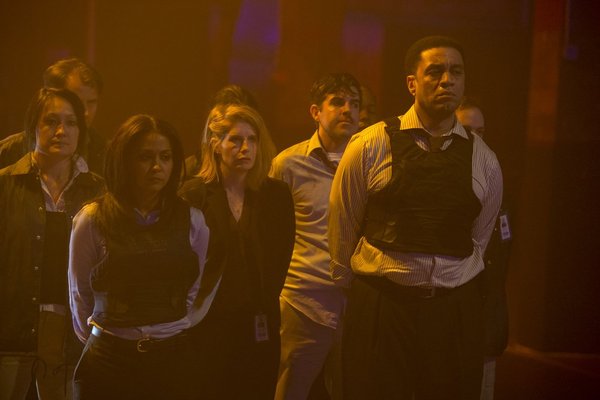 Pánico
Pánico
Directed by Julián Soler
Mexico, 1970
Julián Soler’s Pánico is part-understated horror gem, part-mad scientist absurdism. This three-part anthology film starts really strong, with visible influences from Welles and Kurosawa, and then takes a left turn with something that would be very much at home in a Rex Carlton-produced episode of Tales from the Crypt.
There’s virtually no dialogue in the first seventeen minutes of the film. But there are a whole lot of screams. Ana Martín plays an unnamed woman shrieking and running through a forest away from a purple-clad woman wielding a knife. There are a few flashbacks, one indicating a possible gang rape, the grotesque close-ups of which remind of Janet Leigh’s interaction with a gang of thugs in Touch of Evil, but for the most part this first short film (titled, simply, Panic) gets its mileage out of some pretty compositions and camera movements from Soler.
The funny thing about both Panic and the second part, Solitude, is not only that both are largely silent, but that both seem somehow more indebted to Spaghetti Westerns than to giallos. The most frequent shot is an extreme close-up on eyes which, though these frames don’t come mid-duel, lend to a sweaty kind of claustrophobia amidst the wide open nature that’s so readily featured in both. Both shorts feel confident even with stories that aren’t particularly special. That’s due to some dizzying nature sequences from Soler and a slow-burn, patient pacing.

While Solitude, a two-hander about men fleeing an unknown plague down a murky river, is quiet and brooding, the last part, Anguish, is anything but. A crazed doctor invents a medicine that mimics the experience of death. Unfortunately, he accidentally becomes the first patient and must, in very dramatic voiceover, try to will his wife to see that he’s not dead after all.
Anguish has little going for it. It’s silly and features a ridiculously inexplicable ending. The worst part is that this third part of the anthology is longer than the first two combined, bringing Pánico to a turbid ending. If there’s horror in Panic and creeping dread in Solitude, then at least there’s good old-fashioned low budget, Vincent Price-like comedy-horror in Anguish, a tradition just as withstanding as the others.
But Anguish aside, Pánico feels like many storied traditions of imaginative horror before it, the most obvious of which – the giallo – comes through in a crazed mix of fantasy and horror. The splashes of color, particularly the pinks and purples in Panic push the film to feverish, oddly domestic nightmare. And some of the singular images – a doll’s head in a drainage pipe, a man’s face slowly disappearing under layers of dirt – have strange staying power.
- Neal Dhand




